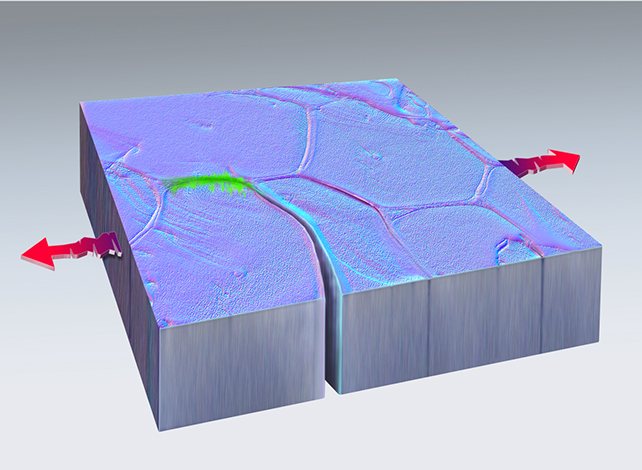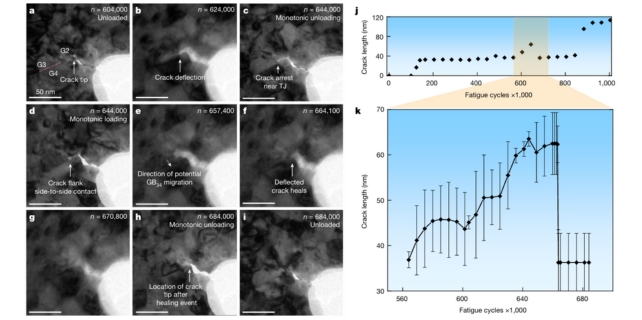Something that’s not supposed to happen has occurred. Researchers have witnessed a metal repairing itself through a scientific experiment. If this phenomenon can be thoroughly grasped and mastered, we may be at the threshold of a groundbreaking era in engineering.
Method to pull on the metal ends 200 times per second.
Researchers then observed self-healing at the ultra-small scale in a 40-nanometer-thick layer of platinum that was isolated in a vacuum space.
Repeated stress and motion lead to microscopic breaks that ultimately cause machines or structures to fail.
After nearly 40 minutes, the platinum crack astonishingly began to repair itself, fusing together miraculously, only to continue and shift in a brand-new direction.

Materials scientist Brad Boyce from Sandia National Laboratories when the results were made public.
We hadn’t been searching for it. What we have verified is that metals possess an innate, natural capacity to repair themselves, specifically when damaged by fatigue at a microscopic level.
The impact of self-healing metals on devices could be immense, whether that’s in their own ability to fix wear and tear, or how long they last in our hands, starting with what’s inside cars and extending all the way to the phones we use.
.
He found that his decade-old theories of metal’s self-repair at the nanoscale were confirmed by what was happening right before his eyes.

It will be interesting to see if the transformation can be replicated in everyday conditions, since the experiment was conducted in a vacuum; the results from the lab may not necessarily translate to what happens in metal when it’s not in a vacuum.
This phenomenon occurs anywhere else but in extremely cold temperatures, as long as metal surfaces meet closely enough for their atoms to overlap.
Ordinarily, slight layers of air or impurities intervene with the process; in settings such as the vacuum of outer space, metals can be coaxed close enough together that they adhere literally.
Demkowicz.
.
A previous iteration of this article was initially published in July 2023.
